Could We Live With Lynx?
Many generations have passed since the shy, beautiful, and charismatic lynx roamed the wild forests of Scotland. Today, the possibility of reintroducing this native predator is a tantalising prospect for some but for others, represents an unwelcome imposition.

Until just a few years ago, the lynx was virtually unknown as a former native of Scotland.
Beavers and wolves dominated discussions about reintroductions. Nowadays though, it seems you can barely open a newspaper, magazine or website without meeting the intense, feline stare of a lynx as the prospect of their return is very publicly raised once again. But between the uncomplicated optimism of the advocates and the dire scenarios painted by the naysayers, what would it really be like to live alongside this enigmatic feline in the human-dominated landscapes of modern Scotland?

We know from bone evidence that Eurasian lynx once roamed the length and breadth of Britain. These bones, coupled with cultural evidence from recent centuries - such as the local Gaelic word for lynx, lugh - tell us that the species survived in northern Britain until medieval times.
These faint traces of Britain's lost cat point the finger of blame for the species' extinction, not at natural climatic processes that occurred millennia before, but instead at the activities of humans.
The lynx is a solitary, shy hunter requiring large areas of cover from which to launch ambush attacks on smaller deer, especially roe, its favoured prey. Consequently, woodland is a key habitat for Eurasian lynx. Severe deforestation by humans, the resultant decline of woodland deer, and persecution by local peasant farmers whose woodland-grazed sheep and goats would have succumbed to the remnant lynx, are all likely to have led to the extinction of the species in Britain. Under these circumstances, there is an ethical argument for considering its return.

International treaties and European law obliges member states to consider the desirability of restoring extinct native species. Indeed, a series of lynx reintroductions has taken place since the early 1970’s in Switzerland, France, Germany, Italy, Austria, Slovenia, Poland and the Czech Republic. Not all of these projects have been successful, but useful lessons can be learnt from the failures as well as the successes.
During the last century, Scotland witnessed largescale reafforestation as well as substantial growth in woodland deer populations. Doctoral research I carried out suggests that a viable population of around 400 lynx could survive in mainland Scotland north of the Central Belt. A more fragile population of 50 or so could exist in the Southern Uplands and extend across the border into the English portion of Kielder Forest.

DEER HUNTER
The obvious ecological function of most large carnivores is to kill and eat large herbivores. Lynx typically focus on the smallest hoofed species in an environment and across Europe and northern Asia that’s usually the roe deer, although they are capable of taking larger species such as red deer hinds and calves, reindeer and chamois. Once a lynx has made a kill, the remaining deer population in that locality becomes wise to the presence of a predator in their midst and enters a state of high alert. They are then much harder to ambush successfully. So the lynx typically has to move on after a week or so to another part of its home range in order to encounter less vigilant prey. The average distance between consecutive kill sites in Switzerland is over 6.5 km for a female and over 12 km for a male. This need to encounter and successfully ambush large prey, and then to eat one each week, means that Eurasian lynx need very large territories indeed. Males in particular can have home ranges of over 200 km2 – far bigger than those of our existing carnivores such as wildcats, foxes or pine martens. This and their territoriality means they are a very low-density species.

However, when Switzerland’s reintroduced lynx population was colonising new ground in the 1990s they encountered predatornaïve roe deer and chamois clustered at high densities. After about five years, sustained and unusually localised lynx predation brought about considerable decreases in local populations. Surviving chamois and roe developed stronger anti-predator behaviour and became much less clustered in the landscape. If lynx in Scotland focused their predation on areas that support high concentrations of roe and sika deer, they could bring about a substantial reduction in localised densities and thus browsing damage, to the benefit of both nature conservation and commercial forestry.
So by restoring lynx we would be restoring predation on our deer populations, something that, for centuries, has only been achieved by human hunters or opportunistically by the odd fox or eagle.
By killing a deer a week all year round, and leaving what it doesn’t eat on the forest floor, including meat, bones and skin (not just the gralloch), the lynx also regularly provides food for other species, from beetles to eagles and even the soil itself, in a way that humans and the opportunistic predators tend not to do. So while the very act of restoring the wild, beautiful, charismatic lynx may be seen as the aesthetic embodiment of rewilding, it also brings with it the less glamorous natural processes that are central to its ethos.

GROUNDS FOR CONCERN?
Understandably, a human population unaccustomed to living alongside large carnivores will have concerns about their return. This should not be dismissed by conservationists as ill-informed scare mongering. Experiences elsewhere tell us it is essential for the success of a reintroduction that all sectors of the rural community are involved in discussions and have the opportunity to shape policy. A lack of public involvement in the Swiss reintroductions of the 1970s led to a sense of disenfranchisement, particularly among sheep farmers and hunters. As a result, the illegal killing of lynx in Switzerland still occurs today and is a significant mortality factor. Reintroductions to Bavaria and Austria in the 1980s failed because local hunters were opposed to them and it is thought that many of the released animals were shot.
Conservationists will likely see lynx predation of roe as a long overdue return of a missing ecological process. Roe stalking here does not carry the same cultural value as that of open hill red deer or that of roe stalking in many other parts of Europe. Nevertheless, those who partake in the professional or recreational stalking of roe might be resentful of lynx reintroduction, especially if, as the evidence from elsewhere in Europe suggests, deer abundance or behaviour changes significantly and makes it harder to pursue their profession or pastime.

Their reluctance to stray far from cover means that lynx are most unlikely to make a nuisance of themselves on grouse moors. There are, however, concerns about the effect that lynx could have on threatened populations of the forest-dwelling capercaillie. It is true that in boreal landscapes where deer densities are very low and where woodland grouse are abundant lynx supplement their diet with capercaillie. However, in western and central Europe, where deer are much more abundant, capercaillie is a very rare feature of lynx diet. In an intensive study in the Swiss Jura Mountains, the remains of 617 prey animals were recovered, but only one capercaillie was recorded in 10 years. Interestingly, 37 foxes fell prey in the study and as a nest predator they are much more likely to have had a negative impact on the local capercaillie population than the lynx. This fox-killing behaviour is widely reported from around Europe and could actually serve to benefit ground-nesting birds. And who knows what it might mean for wildcats, with which foxes have considerable dietary overlap, or indeed lambs?
Attacks by lynx on sheep, particularly lambs, are known from across Europe and it seems inevitable that lynx would kill sheep here in Scotland.
It is important however to put this in perspective. Levels of lynx depredation on sheep in the Carpathians, where shepherding is intensive, are so low as to be virtually non-existent. The opposite end of the scale is the rather unique situation encountered in Norway where no protective measures are taken, but where 2.5 million sheep are grazed each summer in woodland, i.e. prime lynx ambush habitat. With roe deer densities low in much of Norway, hundreds, if not thousands, of sheep are thought to be killed each year. Despite their relative scarcity however, the most common lynx prey species is still the roe deer. Furthermore, where deer densities reach 4 or more per square kilometre, a very modest figure by Scottish standards, predation on sheep is rare. Unlike Norway, the vast majority of woodland in Scotland contains no sheep and the vast majority of sheep are grazed in open habitats. A far more likely scenario for Scotland is the one that occurs in France and Switzerland where intensive shepherding is similarly absent, but where sheep are grazed in open pasture. Here, only a small number of lynx within the population kill sheep and only at very specific locations.

In the Swiss North-western Alps, 77% of 456 sheep pastures experienced no incidences of depredation by lynx in the 20 years up to 1999. A further 15% experienced only one incidence during this time. Of those sheep owners who did lose sheep to lynx, 80% lost three or fewer animals in those 20 years. The distance of the pasture from woodland or scrub has a strong bearing on levels of depredation, with 88% of lynx kills occurring within 200m of the forest edge. The grazing of sheep, particularly lambs, away from the forest edge reduces the risk considerably. Those parts of the landscape that appear to be predisposed to depredation by a succession of lynx justify the use of more costly protection measures. The use of shepherds or guarding animals such as dogs, donkeys and llamas are all recommended for reducing lynx depredation of sheep and are most cost effective where there is an acute problem. In Switzerland such government-funded methods have been extremely effective at reducing the annual number of lynx-killed sheep and goats in Switzerland from a high of 219 in 2000 to fewer than 20 by 2006. It has consistently remained under 50 animals per year since then, fluctuating a little in response to oscillations in the roe deer population.

REWILDING ICON OR BÊTE NOIRE?
Tourism is today crucial for rural areas of Scotland. The wildlife tourism sector in particular has expanded quickly, with over 3000 people now directly employed. Large carnivores have the potential to contribute to rural tourism, either directly as people seek opportunities to catch a glimpse of such charismatic and elusive species or indirectly by acting as a powerful icon of the wild. Large carnivore tourism is being developed in several areas of Europe and since the return of lynx to some German national parks, authorities and businesses have moved quickly to utilise the lynx as a powerful marketing tool, with images of lynx used extensively on brochures, posters, t-shirts, books and signs promoting the national parks to visitors.
Another aspect of this human fascination with lynx is that there is considerable potential to pull in sponsorship, whether corporate or ‘crowd-funded’ which is otherwise unavailable to nature conservation or agri-environmental budgets. The Wolf Compensation Trust in the USA and the UK-based White Dog Fund, which helps fund measures that reduce impacts on farmers of bears, wolves and lynx in Slovakia, are examples of how those in favour of large carnivores, rather than individual farmers or the ‘public purse’, can shoulder the costs of reintroduction. Both of these funds are managed by NGOs and financed largely by their memberships.
Measures to contain and mitigate lynx attacks on sheep would need to be put in place long before lynx were ever released. A variety of prevention, mitigation and compensation measures has been tried and tested across Europe, and so we are in a position to cherry-pick those most appropriate to Scottish circumstances. However, would we in Scotland, in addition to paying for these, be prepared to accept the concept of humans ‘managing’ a reintroduced lynx population, including perhaps limiting its range or capping its numbers?

In Switzerland, ‘problem’ animals (those taking 15 or more sheep in a year) are shot under licence, whereas in several north European countries where lynx populations are large and secure, including Norway, a percentage is shot each year as part of a hunting quota. This serves to foster tolerance in rural areas of a species that competes for the game of hunters and kills the sheep and goats of farmers. However, this would seem to fly in the face of the rewilding ethos of minimum human intervention where populations are encouraged to reach their full potential and where natural processes such as predation are allowed to operate unfettered.
Here in Scotland, the concerns of farming and hunting organisations, and the risk of a new, bitter wildlifemanagement conflict erupting in the countryside, are likely to have a strong bearing on government decision-makers faced with an application to reintroduce lynx. Some of those who live and work in the countryside have already expressed concerns about reintroduced white-tailed eagles taking lambs on the west coast and illegally reintroduced beavers blocking ditches and flooding farmland in Tayside. Some crofters have felt powerless to deal with eagle depredations, while farmers are concerned that, should wild beavers be allowed to stay in Scotland, they will receive strict legal protection that would prevent them managing the population or any negative impacts. Should that be the case, it’s hard to see how land managers would ever countenance lynx reintroduction and consequently how government would ever sanction it.
Despite a legal (and arguably moral) obligation, a wellattested historical presence and the abundance of habitat and prey here in modern Scotland, it seems unlikely that the lynx will make a return. That is unless we, the people of Scotland, can arrive at a consensus. And that will require listening to, and respecting, other people’s points of view and perhaps being prepared to give a little ground – both ways.
Maybe then Lugh can come home.





